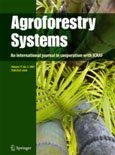Download:
DOI:
https://doi.org/10.17528/cifor/001733Altmetric score:
Dimensions Citation Count:
Publication year
2005
Authors
Murdiyarso, D.; Herawati, H.; eds.
Language
English
Keywords
case studies, carbon sequestration, Kyoto Protocol, development projects, livelihoods, climate change, community development, clean development mechanism, application, conferences
Geographic
Indonesia, Colombia, Philippines, Costa Rica, Mexico, Timor Leste
























